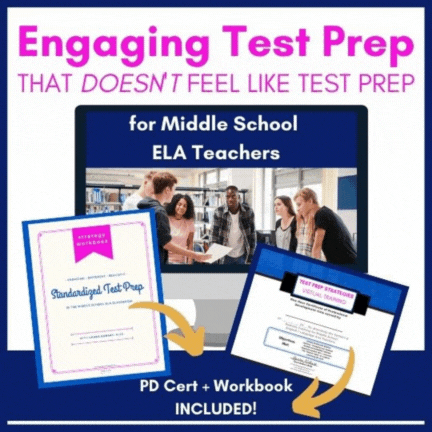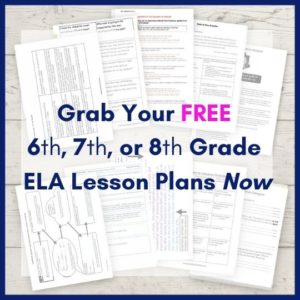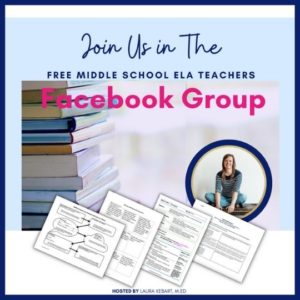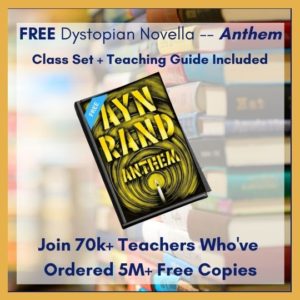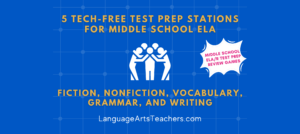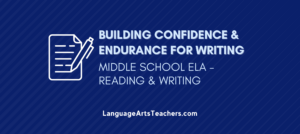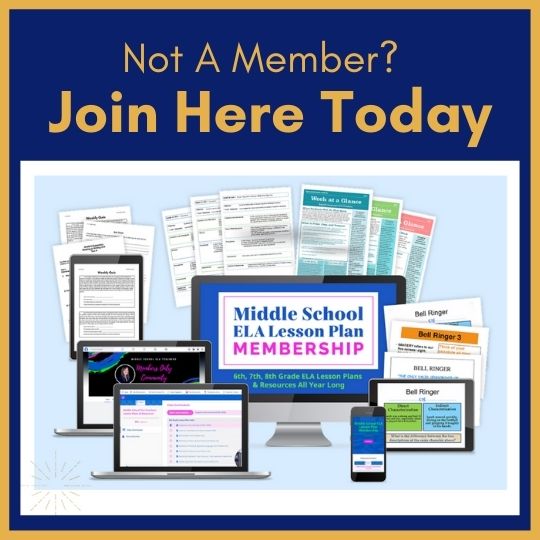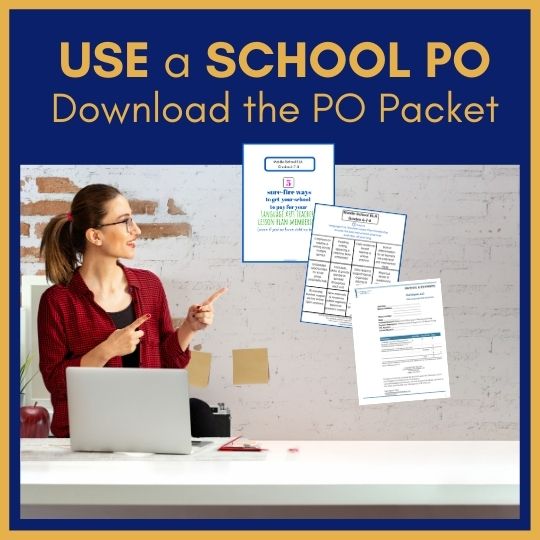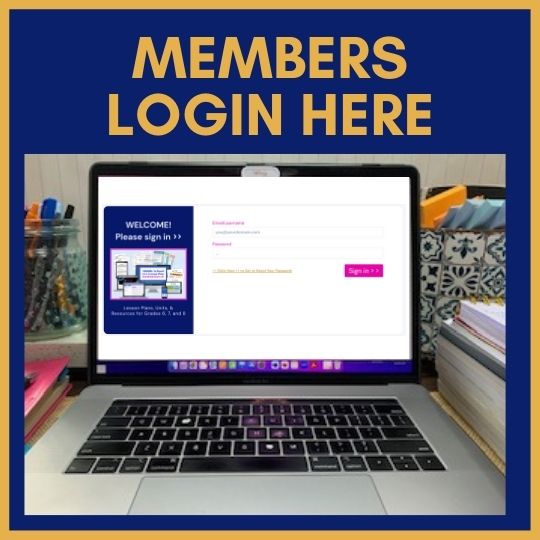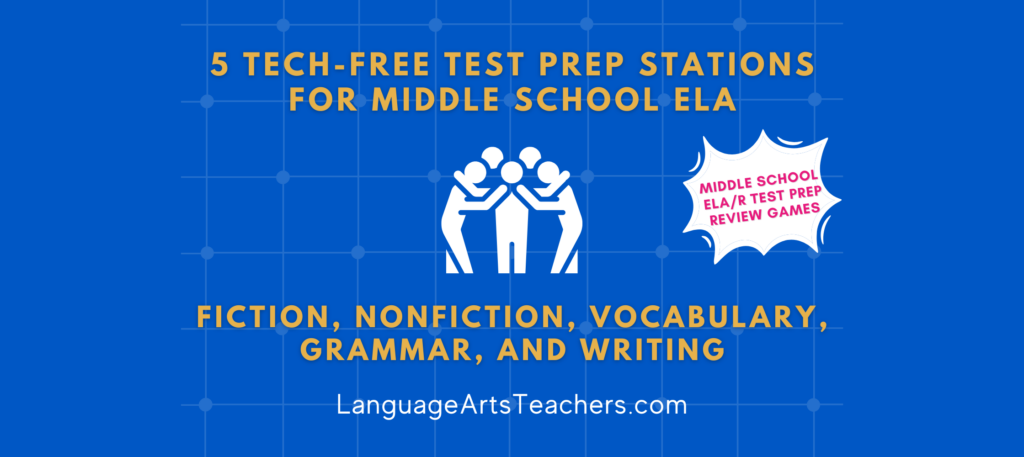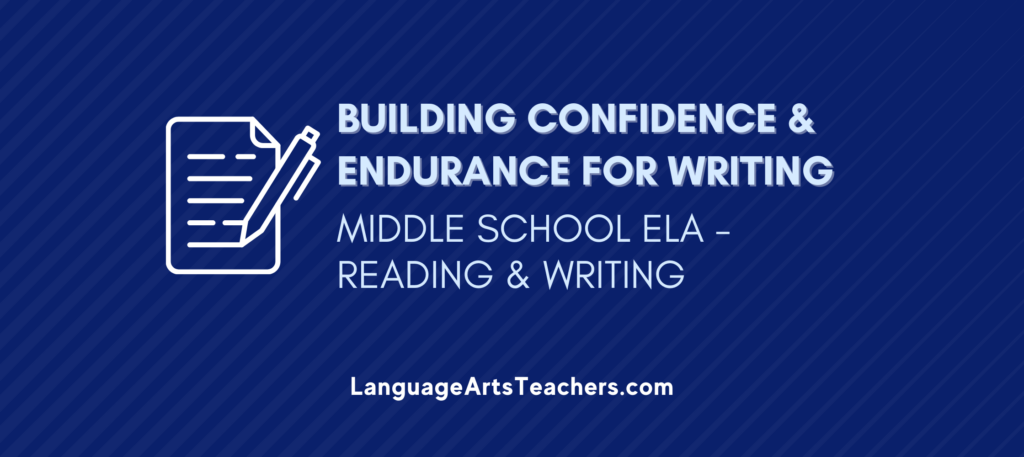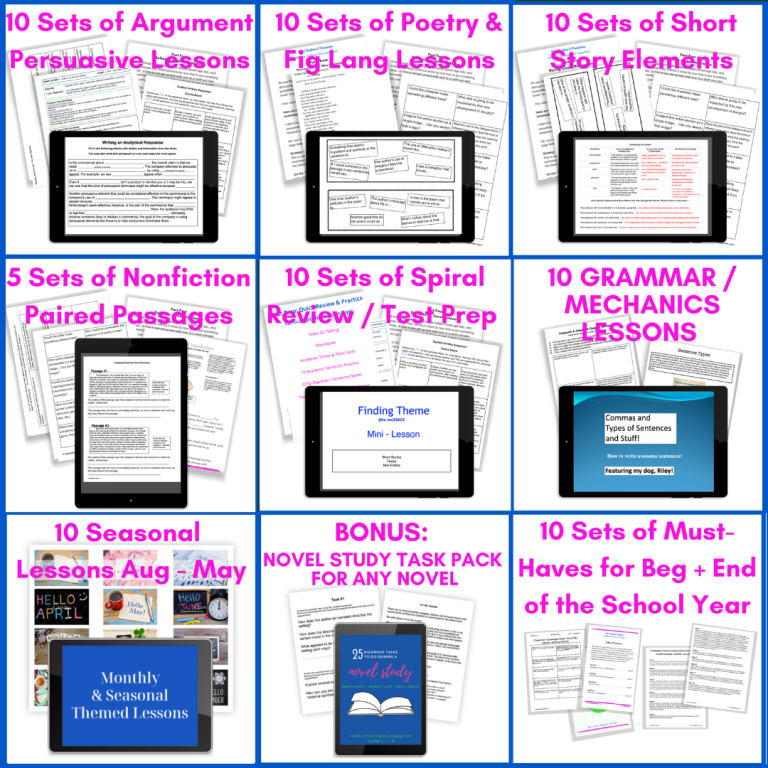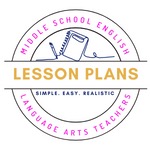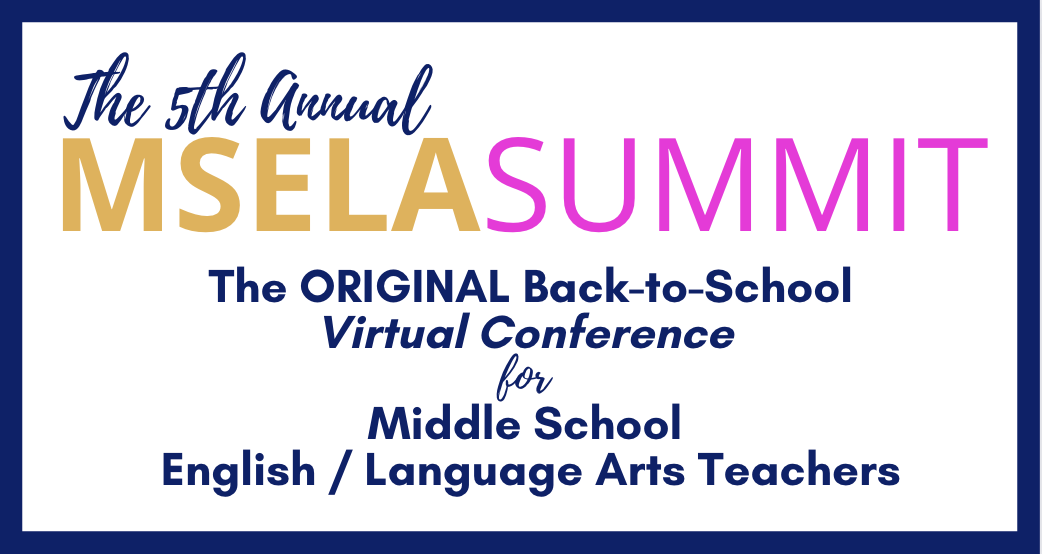Middle School ELA students are going to have sooo much information thrown at them during the first week of school, not to mention during the first day of all their classes. Imagine (or remember?) your time as a student and every 45 minutes or every 60+ minutes you’re changing classes: Different subject, different teacher, different procedures, different names. It’s a lot!
The syllabus is important (and probably required in most schools) because it’s the first official documentation students and parents receive that lays out academic and classroom expectations for a particular content area. It’s what parents often refer back to later in the year to double-check something they may have questions about.
A syllabus also serves to protect the teacher in a sense because it represents a plan and because it provides details of accountability.
The issue here is what to include or not include in a syllabus. We don’t want it to be too long, too detailed, or too restrictive because professional plans change throughout the year based on what our students need. Rather than feeling locked in or boxed in with a highly-detailed syllabus, we want the syllabus to serve more as a overview or a guide for what is to be expected in the class.
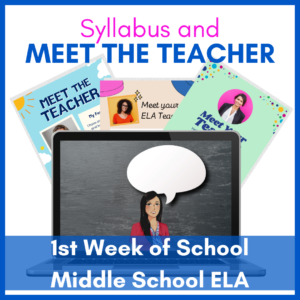
Here’s a collection of ideas to include in your syllabus design and to exclude from your syllabus design to ensure a smooth school year where you don’t feel trapped in March because of something you thought was a good idea back in August:
How to Organize Your Middle School ELA Syllabus
The Top:
- Your name, room #, conference / planning schedule
- Your contact information (school email and school phone number)
- Your response time (Ex: I respond to emails within 24 hours on school business days) so students and parents know not to expect a response right away — because you’re teaching and grading and planning!
The Middle:
- School or department requirements like mandatory book lists or official supplies for your specific content area—things the school requires that you don’t really have control over. This could also include any additional text books or resources students will have access to for classroom requirements.
- Breakdown of grades or how learning is assessed—Again, these are school or district-level requirements that you don’t control
- Homework or technology policies unique to your grade level or content area
The End:
- A link to the grade-level standards from your state or district so parents can see what you are basing your classroom content on. Rather than list out a bunch of standards, link to it! Write something like “Click here to view the state standards for 7th Grade ELA. Our reading and writing lessons this year are designed to promote mastery of these requirements.” This helps parents (and students) see that what you will be teaching is tied to objectives that come from above.
- Your class website, grading access link, or other methods of communication as it relates to assignments or grades (if applicable). Hint: I like to take the link for the online grading book and turn it into a QR code so parents and students can simply scan it with their phones for easy access.
- A list of very simple classroom rules or expectations (no more than 3) that covers all other rules and expectations. For instance, my only three rules are:
- (1) Show that you are ready to focus and work each day.
- (2) Respectfully help our learning environment.
- (3) Take responsibility for your thoughts, words, and actions.
Every behavior I’ve ever encountered in 17 years of teaching goes back to those three expectations. . . Outbursts, redirection, lack of work ethic, talking off-task, interruptions, etc. ALL goes back to one of those three rules and I’ve never found a need to have any more than that.
To get your hands on the specific templates and samples from syllabi that I personally use, join the Middle School ELA 1st Week Lesson Plan Workshop to get ALL the resources and materials I’m talking about here!
It’s Free!
In just 15 minutes a day, for 5 days, you’ll have your ENTIRE 1st week of plans DONE along with all the lessons you’ll be using.
Meet the Teacher Ideas for Middle School ELA
I don’t remember anything personal about any of the teachers I had as a student. Whether they liked dogs, or were married, or had kids, or what their favorite food was never once came up in my K – 12 school experience. That being said, I still had a good relationship with my teachers. I know I felt curious about them sometimes, but as a student, I had my own life and my own friends and I just don’t remember thinking about my teachers’ personal lives (except for those awkward times I ran into them in the store LOL)!
Today though, I share the parts of my life that relate to what I’m doing in the classroom. I do this through print and / or digital ways, but I don’t formally “present” myself and my life to my students. I guess I’m introverted in that sense.
For example, my “Meet the Teacher” includes the following types of information:
- What book I’m currently reading (Churchill’s Secret Messenger)
- My favorite movie (The Shawshank Redemption)
- A fun photo of my dog (Lucy, my chocolate Lab as a puppy)
- My most memorable first-day-of-school moment (I threw up on my teacher’s desk in 2nd grade)
- The last thing I wrote (A sweet card to a good friend who moved away)
- My favorite food (Tex-Mex & BBQ because I can’t choose between the two!)
I do all ^that on a one-page template I grabbed here from Canva for free, and I also turned it into a Google slide.
My “Meet the Teacher” is then used as a model for students to create their own version. They can do this either on paper or on a Google slide or other tech tool. I allow them to change the topics if they wish (instead of a fun photo of their dog since they may not have a dog, it could be how many siblings they have or how many states they’ve lived in).
It’s engaging, creative, and serves a purpose beyond simply showcasing my life to my students. I like to use my “Meet the Teacher” format to inspire my students to create their own. That can then become the basis for future narrative writing assignments (or memoir writing), or as a way to build some opportunities for social emotional learning in the classroom. . . Especially when students get to share their own “Meet Me” products with each other.
For the specific Meet the Teacher templates I personally use, along with the official student version of the lesson, join the Middle School ELA 1st Week Lesson Plan Workshop to get ALL the resources and materials I’m talking about here!
It’s Free!
In just 15 minutes a day, for 5 days, you’ll have your ENTIRE 1st week of plans DONE along with all the lessons you’ll be using.



